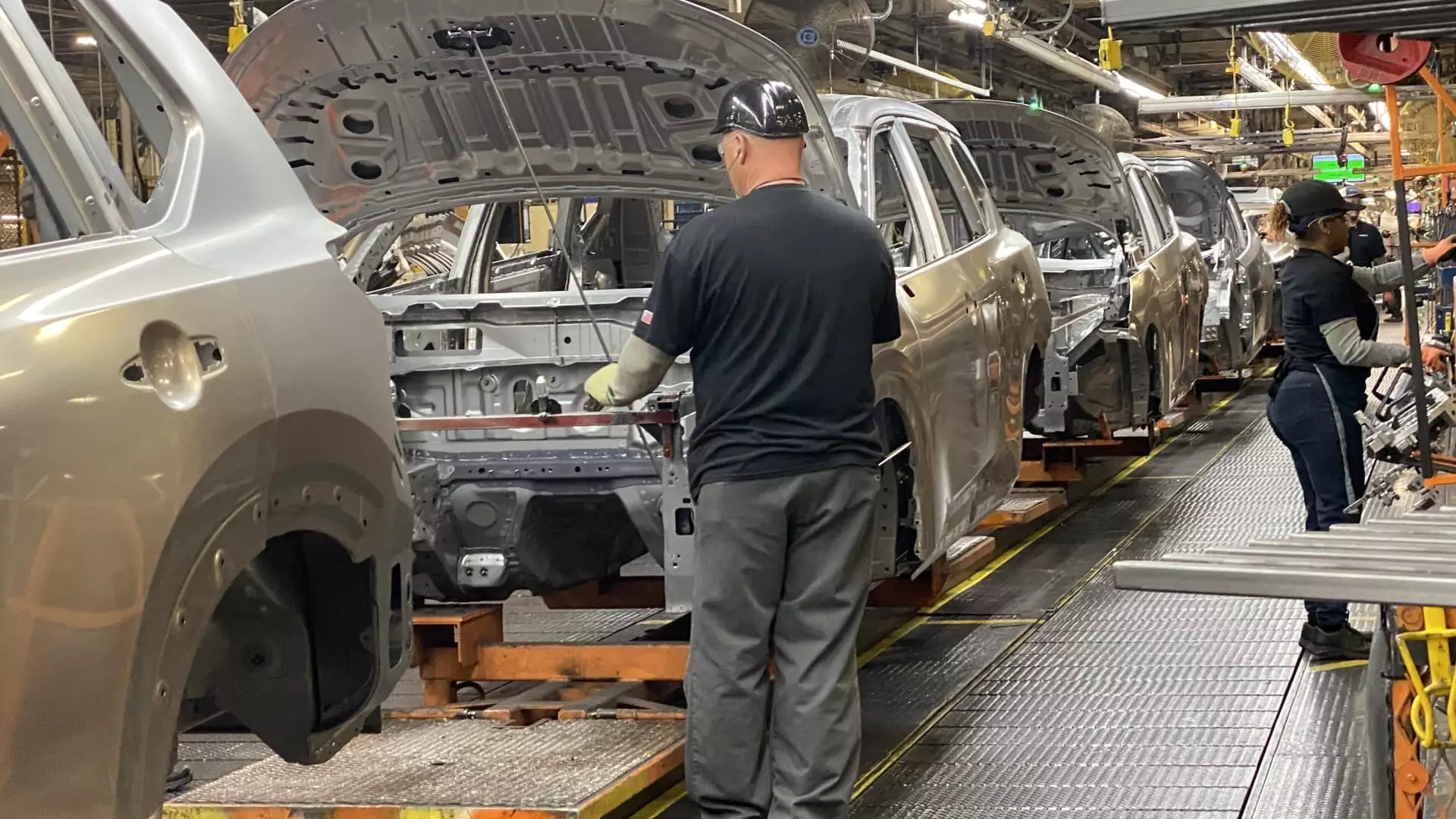The automotive sector is presently confronted with a catastrophic upheaval that has been precipitated by President Donald Trump’s aggressive imposition of a 25% tariff on imported vehicles. While the political motivations for these tariffs may have been painted as a move to protect domestic manufacturers, the economic repercussions extend far beyond the confines of boardrooms and government chambers, cascading into a full-blown crisis that could dismantle the very foundations of how we understand and engage with automotive commerce today. Analysts predict staggering financial losses and millions of fewer vehicle sales that could shatter consumer trust and reshape the industry for generations to come.
Costly Consequences: A Bleak Financial Outlook
The Boston Consulting Group has outlined that these tariffs may unleash an unprecedented wave of costs within the automotive market, forecasting a burdensome increase in expenses between $110 billion and $160 billion annually for the industry. This isn’t just an isolated incident impacting a handful of corporations—these costs could erode approximately 20% of revenue within the U.S. new-vehicle market. There’s a disconcerting clarity in the data emerging from think tanks such as the Center for Automotive Research, which similarly asserts that U.S. automakers alone will absorb an eye-watering increase of $107.7 billion. The figures encapsulate more than just economic metrics; they reveal the fragility of a sector that many consider the lifeblood of American manufacturing.
Impact on Consumers: Pain at the Pump
As automakers scramble to adapt to these dramatic shifts, the real victim of this turmoil will undeniably be the consumer. Already grappling with escalating vehicle prices—averaging nearly $50,000—shoppers can expect the financial burden of these tariffs to trickle down in the form of heightened costs. With forecasts suggesting new vehicle prices could inflate by an additional $2,000 to $4,000, the market is poised to be less forgiving, pushing ownership of a new vehicle further out of reach for average Americans. By effectively throttling consumer spending power, these tariffs do more than affect car sales—they create a ripple effect that impacts everything from home purchases to discretionary spending.
A Venomous Cycle: Falling Sales and Its Economic Toll
Research suggests that a drop of approximately two million annual vehicle sales in both the U.S. and Canada will ensue as consumers recoil from the rising prices. With the specter of inflation looming larger than ever, inescapably intertwined with these auto tariffs, consumer confidence is at an all-time low. If families are faced with paying more for vehicles, they will likely delay purchases, leading to further declines in sales—triggering a merciless cycle that could bring even greater uncertainty to an already unstable economy. Mark Delaney, a Goldman Sachs analyst, emphasizes that these tariffs will exacerbate an already softened consumer demand, with the costs ultimately paving the way for widespread economic repercussions.
Consumer Sentiment: The Spiraling Downward Trend
As we observe this wave of economic despair, it’s crucial to dive deep into consumer sentiment—what once was a hopeful outlook now feels more like a tightening vise. The University of Michigan’s surveys evoke a stark reality: confidence levels have plummeted, reflecting fears of inflation that haven’t been seen since 1981. The anger brewing among potential car buyers, who feel unfairly burdened by market fluctuations beyond their control, adds another layer of tension. Anecdotes and surveys rife with negative sentiment indicate that the consumer landscape is shifting; buyers will no longer accept inflated prices without voicing their discontent.
Fate of Vehicle Manufacturers: Struggling to Adapt
Manufacturers are left to navigate the murky waters of a highly competitive market that is complicating both production and distribution. Strategies vary widely, with domestic-focused companies like Ford implementing employee pricing promotions to lure buyers while others, like Jaguar Land Rover, cease their U.S. operations entirely to mitigate losses. Hyundai plans to hold off on raising prices to soothe consumer fears, but the question looms: how long can any manufacturer weather this economic storm without incurring substantial cost-shifts?
The disastrous ramifications from tariffs echo a much larger narrative struggling to find clarity and direction. As vehicle prices rise and availability diminishes, it becomes evident that the American auto market is navigating through uncharted territory. The disruptive influence of these tariffs has the potential to redefine the relationships between automakers, suppliers, and consumers, creating a volatile climate that makes planning for the future feeling increasingly precarious. The stakes could not be higher as the industry faces the brutal and consequential fallout from these fiscal policies.

